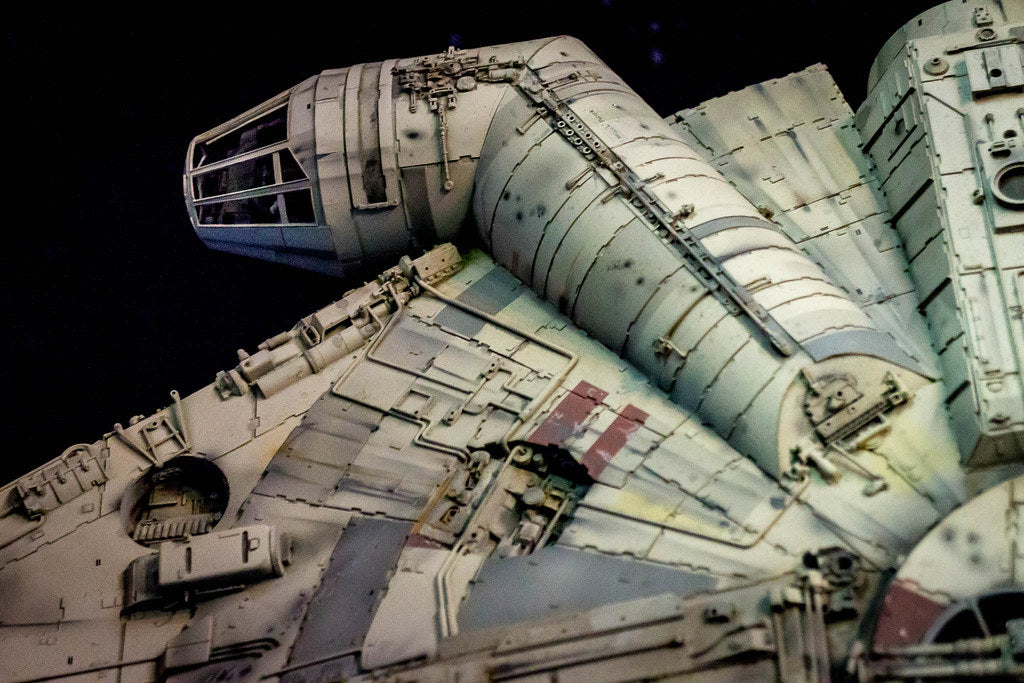The Art of Greebling
Designing accessories for Star Wars is always a task that fills me with a bit of trepidation. On the surface it should be easy. It’s an incredibly well defined world with a wealth of details to choose from, from the allusions to early American hot rod culture in its’ ships, to the Eastern mysticism of the Jedi and Sith. There’s plenty of flavours of aesthetic whether you’re looking to upgrade your Force Tracker token or wage galactic warfare from your Star Wars Rebellion console. The design language already exists, it’s just a case of translating it into something new. So why does it feel tough?
Star Wars is an IP that started out showing you only what it needed to. It drops its exposition where it likes, but it lets your imagination fill in the blanks. The journey we’re on with Luke is what’s important and we know about as much of the universe as he does. An evil Emperor recently dissolved the Galactic Senate. An old sage fleetingly mentions his days in the Clone Wars. What you can’t escape however is the technology, the moisture vaporators Luke toils over, the consoles R2 slices into or Dejarik table in the lounge of the Millennium Falcon. Star Wars as we know it now is a universe of terminology and implied functions. Power converters, computer spikes, kyber crystals and so much more. It doesn’t matter if you don’t know what these things do, we might not even know their names the first time we see them, but they exist and our heroes and villains can be seen to be interacting with them. They’re the little things that allow us to imagine a more mundane existence during the battle for the fate of the galaxy. It’s a collaborative effort between the story-tellers and the audience to build a bigger universe by giving the watcher some room to decide how things work.

Things didn’t start out this way though. I think it started with a practice in modelmaking called greebling, and the accident of Star Wars’ enduring success. Greebling, in its simplest terms, is the act of disrupting a clean surface with seemingly random details and components for the sake of visual texture. In a more film related context, it usually involves the merciless harvesting of scrap, plastic model kits, and all sorts of bits and bobs to both literally and metaphorically fill in the gaps of a design. In this way, the original modelmaking department on Star Wars has had far more of a hand in shaping the mythos of the Star Wars universe than they might ever give themselves credit for. This practice of cost-cutting and efficiency is now something that’s evolved into a style all of its own. Whilst dedicated fans have painstakingly identified ‘part maps’ of the studio models of ships, official sources and illustrators have labeled and given purpose to these details in supplemental material such as the Star Wars Incredible Cross Sections series. What was greebling in the context of Star Wars, has transitioned from a practice of necessity to an incredibly prescriptive and intentional art.

For Star Wars Unlimited, one only needs to look at the humble booster pack to see the key art, the graphics of circuitry, or open it up to see the cards inside, framed as if displayed on the terminals and HUDs of ships. It would seem that to design something to fit into this style should be easy. It’s ultimately just geometry arrayed in a pleasing way. I think that’s the beauty of designing in this greebled style however. You could use something like texture generation to create the surface of the Death Star, but we can see the patterns, the breaks and the edges. In somebody being there to puzzle together pieces of kit, its laid the groundwork for a more plausible universe. You don’t need to tell an audience how something works as long as it’s plausible that it does work.
When making token upgrades for something like Star Wars I always like to imagine the function of what I’m portraying. Is this Plan token the device on which valuable intelligence is stored? This Base Tracker Dial might be showing me the trajectory of nearby ships. These are my interpretations of the massive shared universe so many of us love, but the trepidation comes from hoping you’ll be able to tell me your idea of what they’re for. It doesn’t have to be anything like mine, but whatever you see in the piles of acrylic, I hope it sparks something for you, then hopefully I’ve done my job right.

Written by Ed Cardall


